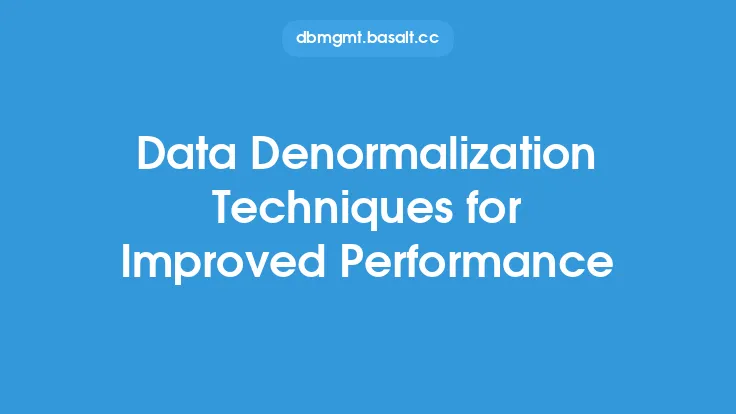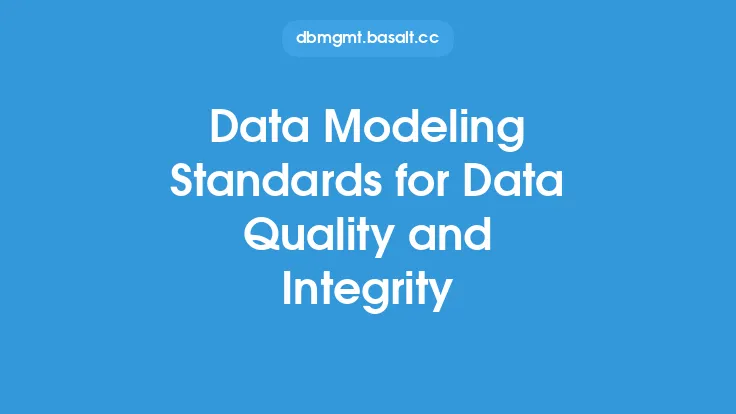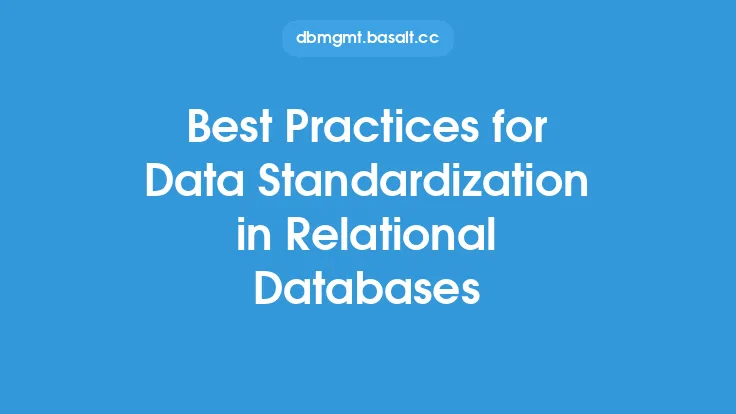Data standardization is a critical process in data management that involves transforming data into a consistent format to ensure accuracy, completeness, and reliability. This process is essential in maintaining data integrity, which is the foundation of any successful data-driven organization. In this article, we will delve into the various data standardization techniques that can be employed to improve data integrity.
Introduction to Data Standardization Techniques
Data standardization techniques are methods used to transform data into a standardized format, making it easier to manage, analyze, and share. These techniques can be applied to various types of data, including numerical, categorical, and textual data. The primary goal of data standardization is to reduce errors, inconsistencies, and ambiguities in the data, thereby improving its overall quality and reliability. Some common data standardization techniques include data profiling, data cleansing, data transformation, and data validation.
Data Profiling Techniques
Data profiling is the process of analyzing data to identify patterns, trends, and relationships. This technique is used to understand the distribution of data, identify outliers and anomalies, and detect errors and inconsistencies. Data profiling can be performed using various statistical and data mining techniques, such as mean, median, mode, and standard deviation. Additionally, data profiling can be used to identify data quality issues, such as missing or duplicate values, and to develop strategies for improving data quality.
Data Cleansing Techniques
Data cleansing is the process of detecting and correcting errors, inconsistencies, and inaccuracies in the data. This technique is used to improve the quality and reliability of the data, making it more suitable for analysis and decision-making. Data cleansing can be performed using various techniques, such as data validation, data normalization, and data transformation. For example, data validation can be used to check for invalid or inconsistent data values, while data normalization can be used to transform data into a consistent format.
Data Transformation Techniques
Data transformation is the process of converting data from one format to another. This technique is used to make data more suitable for analysis, reporting, or other business purposes. Data transformation can be performed using various techniques, such as aggregation, disaggregation, and data mapping. For example, aggregation can be used to combine multiple data values into a single value, while disaggregation can be used to break down a single data value into multiple values.
Data Validation Techniques
Data validation is the process of checking data for accuracy, completeness, and consistency. This technique is used to ensure that data conforms to predefined rules, formats, and standards. Data validation can be performed using various techniques, such as data type checking, range checking, and format checking. For example, data type checking can be used to verify that a data value is of the correct data type, while range checking can be used to verify that a data value falls within a specified range.
Data Standardization Tools and Technologies
Various tools and technologies are available to support data standardization, including data integration platforms, data quality tools, and data governance software. These tools and technologies can be used to automate data standardization processes, improve data quality, and enhance data integrity. For example, data integration platforms can be used to integrate data from multiple sources, while data quality tools can be used to identify and correct data errors.
Best Practices for Data Standardization
To ensure effective data standardization, several best practices should be followed. These include establishing clear data standards, developing a data governance framework, and implementing data quality controls. Additionally, data standardization should be performed regularly, and data should be monitored continuously to ensure that it remains accurate, complete, and consistent. By following these best practices, organizations can improve data integrity, reduce errors, and enhance decision-making.
Challenges and Limitations of Data Standardization
Despite the importance of data standardization, several challenges and limitations exist. These include the complexity of data, the lack of data standards, and the limited resources available for data standardization. Additionally, data standardization can be a time-consuming and labor-intensive process, requiring significant expertise and effort. To overcome these challenges, organizations should develop a comprehensive data standardization strategy, invest in data standardization tools and technologies, and provide training and support to data standardization teams.
Future of Data Standardization
The future of data standardization is closely tied to the evolution of data management and analytics. As data volumes continue to grow, and data types become more diverse, the need for effective data standardization will become even more critical. Emerging technologies, such as artificial intelligence and machine learning, will play a key role in automating data standardization processes, improving data quality, and enhancing data integrity. Additionally, the development of new data standards and frameworks will be essential in supporting the growing demand for data-driven decision-making. By staying ahead of these trends, organizations can ensure that their data is accurate, complete, and consistent, and that they are well-positioned to leverage data for competitive advantage.





